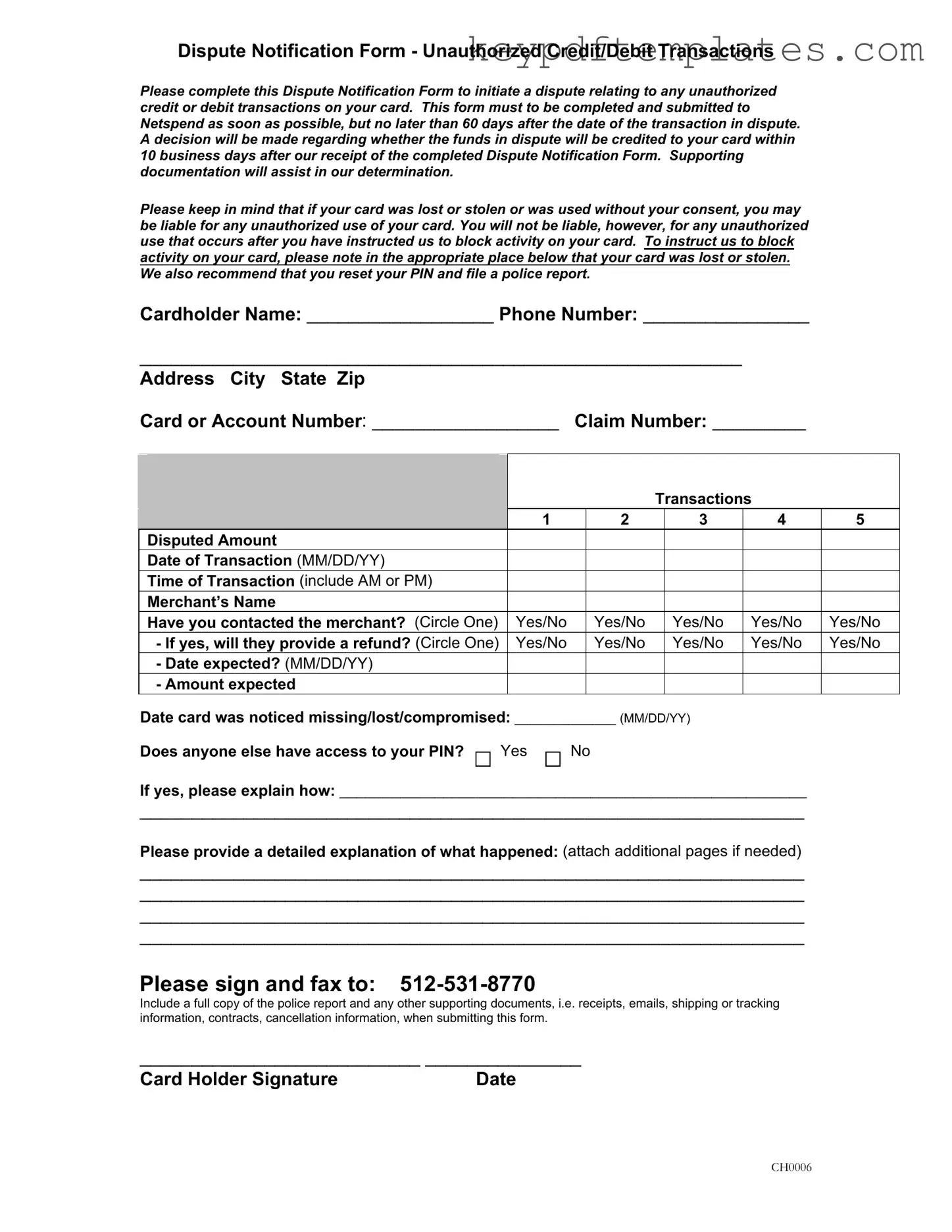Get Netspend Dispute Form
The Netspend Dispute Notification Form is a tool designed to help cardholders report unauthorized credit or debit transactions. By completing this form, you can initiate a dispute and potentially recover funds lost due to fraudulent activity. It’s important to act quickly, as you must submit the form within 60 days of the transaction in question.
Modify Document Online
